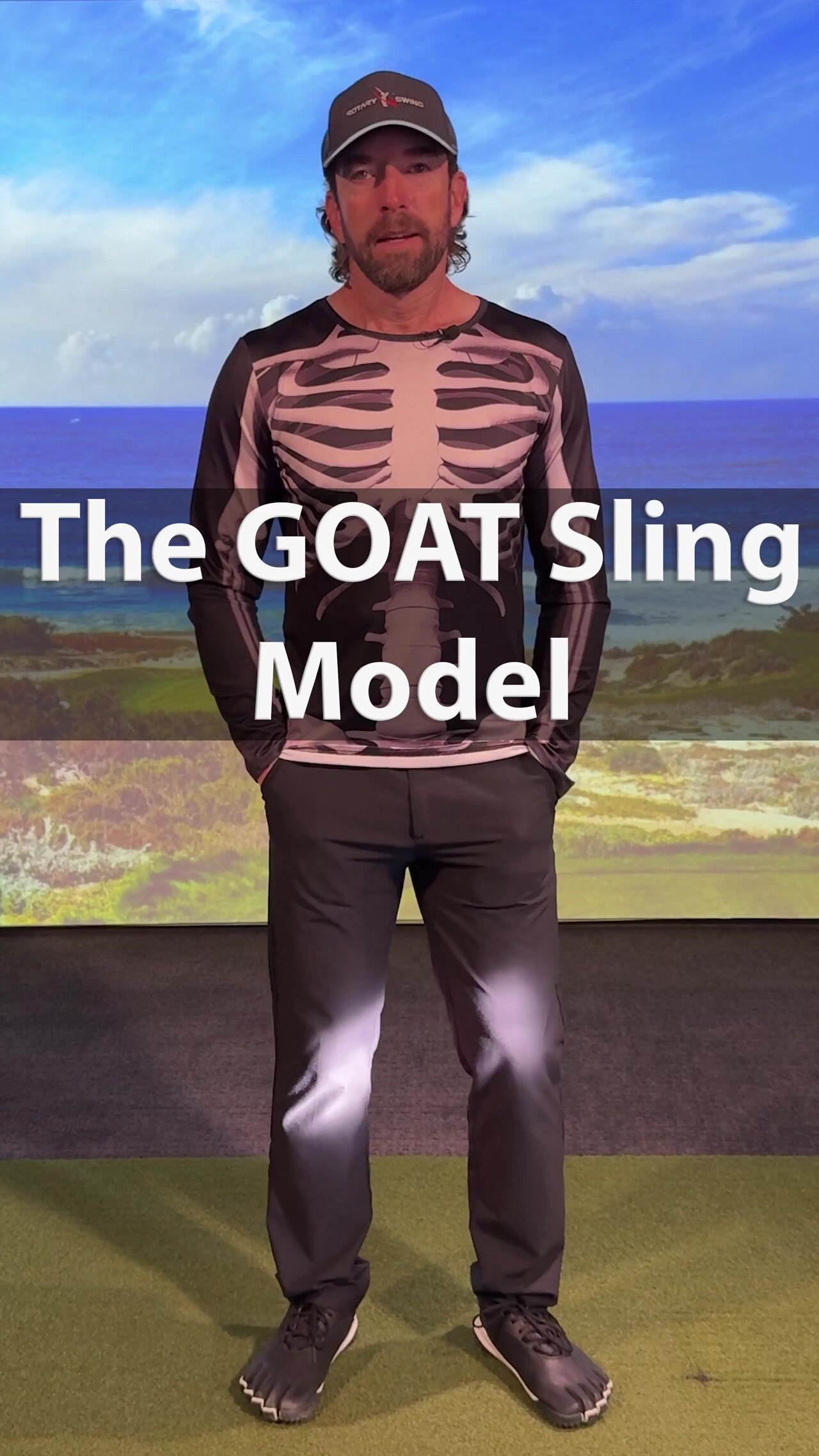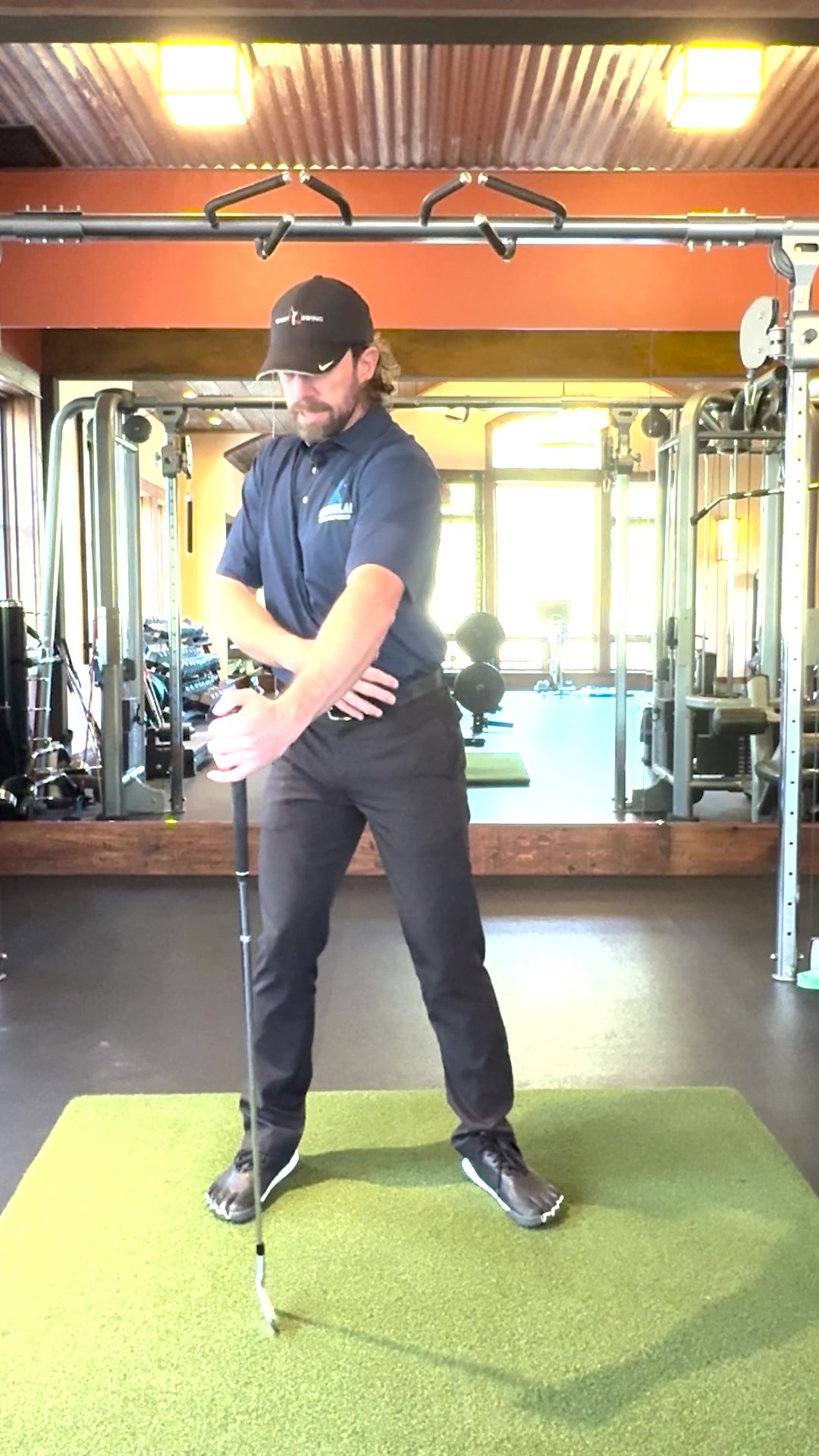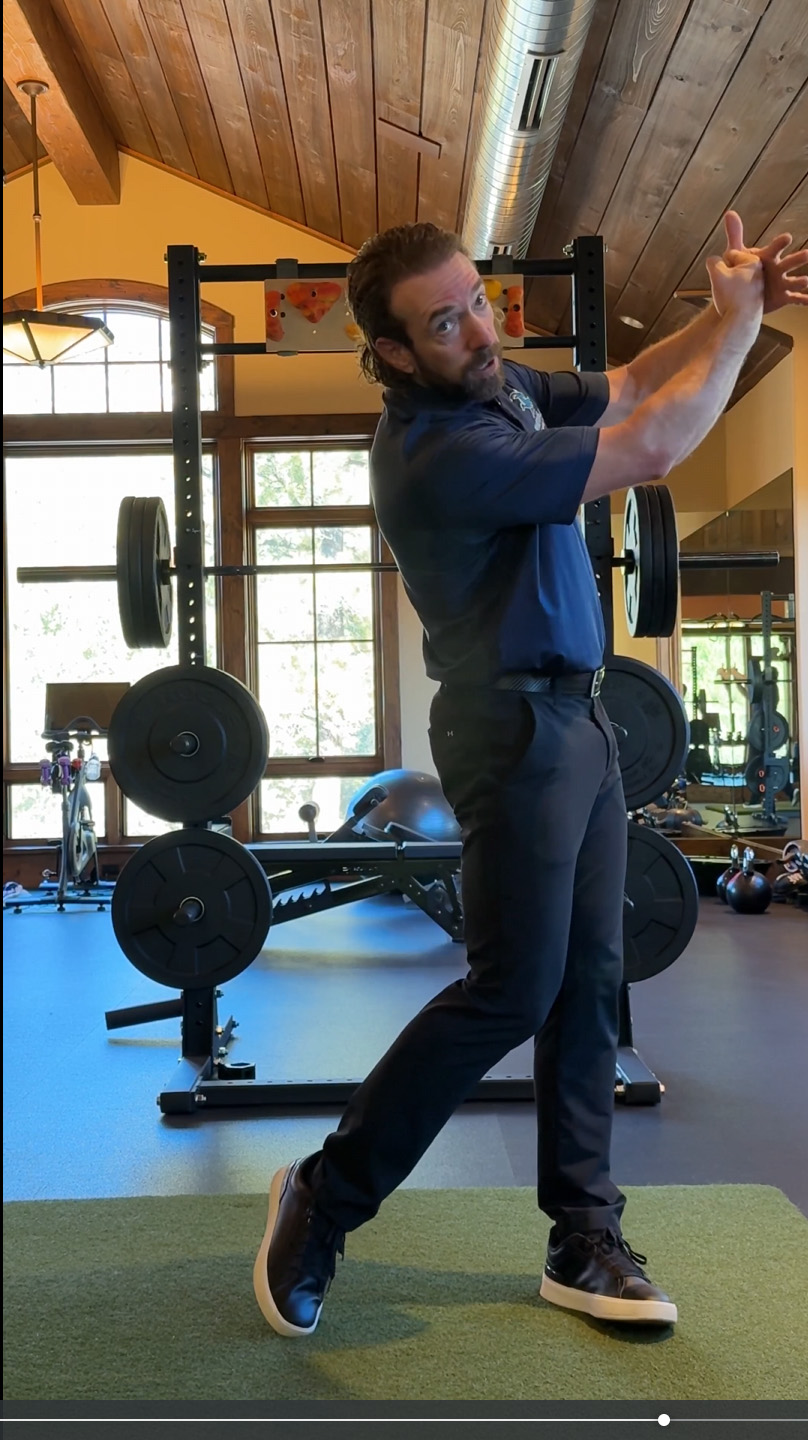It's not uncommon for golfers learning the rotary swing to lose their spine angle through impact. No matter how hard they work at it, they always end up coming out of the shot and struggle with making solid contact. With atleast half the golfers I work with, the problem is NOT technique, but a matter of fitness. I'm not talking about how fast you can run a mile, rather I am referring to your golf-specific fitness level.
Golf is a unique sport in that it is extremely repetitive and places unique demands on the body throughout the entire swing. Unfortunately, many of the muscles needed in the golf swing to be active, strong and supple are the exact opposite muscles we use on a daily basis. In particular, the muscles we activate while sitting down.
Because we spend a great deal of time behind a computer these days, we are training our bodies to move and work in a certain way, no different than if we sat on the driving range for 8 hours and hit balls. I can think of very few things that are more damaging to a golfer's body and swing than sitting in front of a computer all day.
Not only do you deal with the shoulders rolling forward as we reach for the keyboard to type and click, but the entire back side of the body is completely deactivated while sitting. These muscles, hips, glutes, and hamstrings are very critical for stabilizing the golf swing and if they don't work, your swing won't work, no matter how much you practice technique.
In this video, I show you a very simple exercise that can be done everyday while watching TV. It is a superb exercise for showing you to activate and strengthen the muscles in the hip area that are vital for helping you maintain your spine angle.
Note the red circle in the photo above. That is the area that we are targeting with these exercises. You should feel a stretching in this area as these muscles work to stablize the body into the followthrough. If you do not, you likely came out of your spine angle.
From the face on view, you can see how the left leg must be stable in order to support the rotation of the body during the backswing as well as into and through impact.
Lastly, you can see here again how the outside of the left hip is bearing most of the load of the swing while the spine angle is maintained.
Video Transcription: Losing Spine Angle in Golf Swing

Many of us sit all day
Today's technology is great, but sitting in front of a desk typing at a keyboard all day is almost undoubtedly hurting your golf game.
One of the things that we talk about all the time in a Rotary Swing or one plane swing is being able to maintain your spine angle. It's so critical that the spine angle stays fairly constant throughout the golf swing because we take out thin shots and fat shots, and so on and so forth.
The problem is, certain muscles in your body need to be activated in order for that to happen. What I want to talk to you about today is how technology - more importantly, sitting all day in front of a computer, if that's what we call technology - is hurting your golf game.
When you're sitting in a position like this all day, all the muscles in the front side of your body, the hip flexors, the quads, this area in your body, is activated. You're sitting in a position where the whole back side of your body is basically deactivated. You're not using the muscles in the sides of your hips or the back of your hamstrings, any of those muscles.

The sitting position carries over into the golf swing
Unfortunately for the golfer, that's bad because one of the things that's critical for the golfer to be able to maintain his spine angle is actually the outside hip muscles, the glutes and the outside of the thighs, rather than the front area and the hip flexors.
This area is already overly strong. We sit in a position like this all day, where these muscles are in a contracted position. Your hip flexors are already too tight as it is, for almost everyone. When we sit in a position like this for eight hours a day, we're just encouraging those muscles to be shorter and shorter - or contracted - into a position where they overpower everything else.
That's why everybody tends to be like this as they get over the golf ball at address. They don't have good posture because they're used to sitting like this. You're training your body, by sitting at a computer eight hours a day, to be in this position. When I stand up, I'm just going to carry that over into my golf swing.

Rotating back
Unfortunately, what needs to happen is that we've got to activate these muscles on the outside of the thigh to be able to maintain our spine angle, and I'll show you why.
As I swing back, one of the most common things that I see in the golf swing, as I work on these shoulder rotation drills, as they come back and they rotate back down and through, when they actually start to swing a golf club the golfer tends to do this.
They come out of the shot, and of course hit thin shots and they throw their arms at the ball and try to save it, and it's just inconsistent golf.
If they can maintain their spine angle throughout the golf swing, come here, all the way down and through, they've rotated all the way through and maintained their spine angle through the shot, as you can see here.

Rotating back and then through
What they don't realize is that if they're doing it correctly you should feel a stretching in certain parts of your body. It's very important that you feel this. I'll show you again as I rotate from the face on view. I'm going to rotate back, stay really centered, I'm going to drive through.
I've rotated on this leg and stayed really braced. The outside of my hip - this is my hip bone here - just behind it, these muscles are activated and helping me maintain my spine angle. As I rotate back, I rotate through, it's actually these muscles that are supporting my body and helping me maintain my spine angle.
If these muscles are deactivated, it's going to cause me to not be able to support it. They're not strong enough to maintain this position, where the hip is extended out like this and your spine angle is still tilted over.
These muscles literally have to do a lot more work than what they typically do during an average day. If you set up to the golf ball, what you'll typically see is a golfer's legs kind of bow in, again because these muscles are tight here, but these muscles are weak. You don't see very often a golfer who stands like this.

Sitting muscles are used to being contracted
This would be these muscles on the outside being overactive, and that doesn't happen very often. Typically everybody's kind of crunched in like this, because this is how we sit all day in front of computers. We need to open up those muscles, open up the body, so that everything can work in the proper way.
When you want to be able to make a good swing and maintain the spine angle all the way through, we've got to learn how to activate these muscles and deactivate the other muscles.
The first thing that we've got to do is we've got to stretch the hip flexion. There's lots of different hip flexor stretches, and I'm not going to talk about those in this video particularly, because what I do want to talk about is activating the outside muscles.
What I'm going to do is show you a couple of good exercises. They're both going to show you basically whether or not you have a weakness and you're going to learn how to do them properly in order to strengthen these muscles.

Extend your leg 90° in front of you
If you lay down on the mat or in your house on the carpet...you can do this while you're watching TV, so there's no excuse not to do it. If you lay down, put your arm out to the side, your legs straight out in front of you, and take either leg, your left leg or your right leg, and bring it out in front of you at 90 degrees.
My leg is 90 degrees to my spine. Now, while lying in this position I'm going to lift my leg into the air, but not using my thigh muscles or any of these muscles. I want to concentrate on just using the muscles in the back of my hip.

Raise the leg, using the muscles in the back of the hip
As I do this, I can feel that it takes a lot of work to raise my leg. What I want to keep a concentration on is the point where my knee and my ankle always stay constant, so they're coming up together, pointing at the sky. I can bring my leg all the way up, and all the way back down.
As I do this correctly, I can feel the activation in the back of my glutes, this hip muscle area. I don't want to feel anything in the front of my thigh or in my groin area. The hip flexor muscles that we talked about are already too strong, so we really want to key in on just the back muscles by your hip bone.
What you want to do is, apart from just doing it this way, move your leg at different angles because of course your hip isn't just a hinge joint. It moves in an orbital pattern, so you can move your leg at different angles. This is how you vary the exercise.

Second position: Keep the leg straight and raise it from there
The other way to do it is going all the way back down with your legs in a straight line, bringing your thigh up, then bring it forward at 45 degrees and again, concentrating on just using these hip muscles, all the way forward.
What you'll probably find is that one leg will be stronger than the other. Particularly for a right handed golfer, if your lead leg or your left leg is weaker than your right you're going to start to see problems in being able to maintain your spine angle because if these muscles are not activated it's impossible for you to maintain your spine angle as you rotate through the shot.

Bring the leg forward 45° and repeat the lifts again
These muscles have to be very strong, relative to everything else, in order for your spine angle to remain constant throughout the swing.
Take this exercise, do three sets of 10, and vary the angles as much as you can. If you do three sets of 10 going just with your legs in a line, then three sets of 10 with your leg at 90 degrees to your body, those are the two basic exercises. Then you can vary it in between as much as you need to.
The more you work this, the better you're going to find that you're able to maintain your spine angle all the way through your golf swing, and it's going to help you hit more consistent shots.
Watch part 2 now to see how you're moving your body in the opposite direction of the pros!














































































































































































































 Many of us sit all day
Many of us sit all day The sitting position carries over into the golf swing
The sitting position carries over into the golf swing Rotating back
Rotating back Rotating back and then through
Rotating back and then through Sitting muscles are used to being contracted
Sitting muscles are used to being contracted Extend your leg 90° in front of you
Extend your leg 90° in front of you Raise the leg, using the muscles in the back of the hip
Raise the leg, using the muscles in the back of the hip Second position: Keep the leg straight and raise it from there
Second position: Keep the leg straight and raise it from there Bring the leg forward 45° and repeat the lifts again
Bring the leg forward 45° and repeat the lifts again
